Learn more about the three different species, including the best places in the world to see them in our expert orangutan guide.
Do orangutans live in groups?
Orangutans are semi-solitary in the wild (unlike other higher primates). Once they reach maturity, they spend most of their time alone, or, in the case of females, with their immature offspring. Adult males old enough to have cheekpads are the most solitary, spending over 90 per cent of their time alone.
Where can you see wild orangutans?
Orangutans live on only two islands, Borneo and northern Sumatra. They are a relic species. At the end of the Pleistocene period some 12,000 years ago, their range was much wider, encompassing southern China, Indochina, Java and southern Sumatra. The species is now extinct in all these regions.
A new orangutan species (the Tapanuli orangutan) was described in 2017, bringing the total number of orangutan species to three. All three species belong to the Pongo genus, and are listed as Critically Endangered on the IUCN Red List.
What are the different species of orangutan?
1
Sumatran orangutan, Pongo abelii

2
Bornean orangutan, Pongo pygmaeus
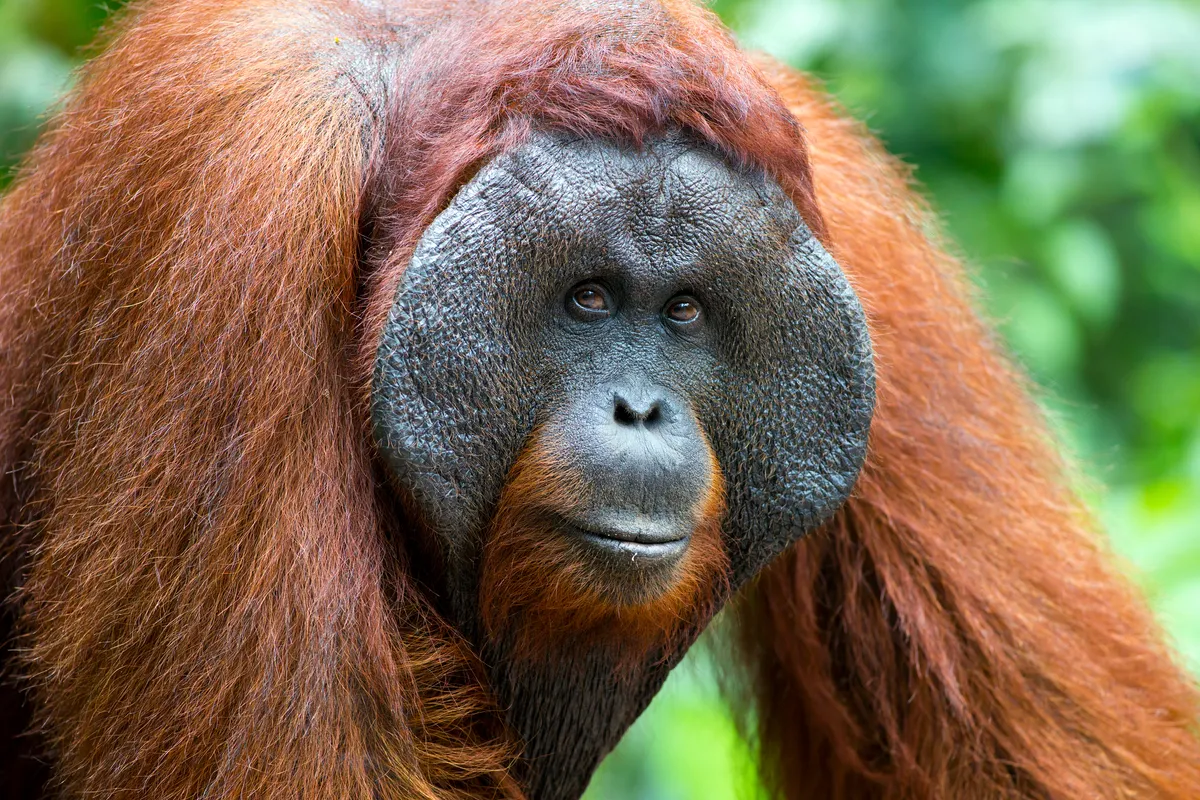
3
Tapanuli orangutan, Pongo tapanuliensis
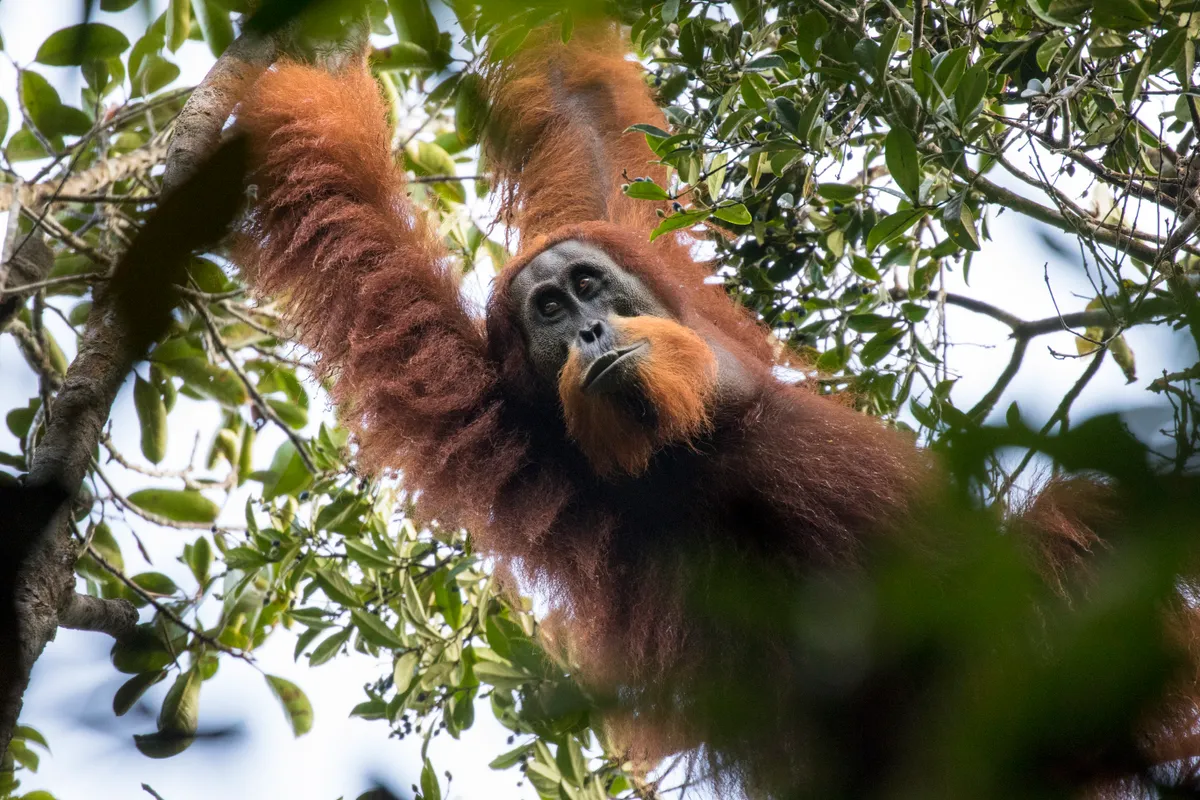
Why are orangutans orange?
Orangutans 'blaze' in the sunlight but virtually disappear when they move into shadow. In the shade of the canopy, their tan skin absorbs the light so you don't see the sparse hair but the dark skin underneath. Then they become functionally black. Could this now-you-see-me-now-you-don't combination be adaptive? Or, given that they generally don't congregate in groups, does their bright orange colour announce their presence to others of their species? We simply don't know.
What does orangutan mean?
Orangutan is a portmanteau, where two Malay/Indonesian words have been combined together. In these languages, 'orang' means 'person' and 'hutan' means 'forest'. So 'orangutan' means 'person of the forest'.
Please note that external videos may contain ads:
What do orangutans do all day?
Orangutans are the largest tree-dwelling animals on Earth. Though adult male gorillas climb up to the canopy to feed, they do not spend much time there and are basically terrestrial. Adult male orangutans, reaching a weight of 140kg or more, spend over 90 per cent of their time in the treetops, eating ripe fruit, young leaves and the occasional termite or vine. Adult females spend even more time in the canopy.
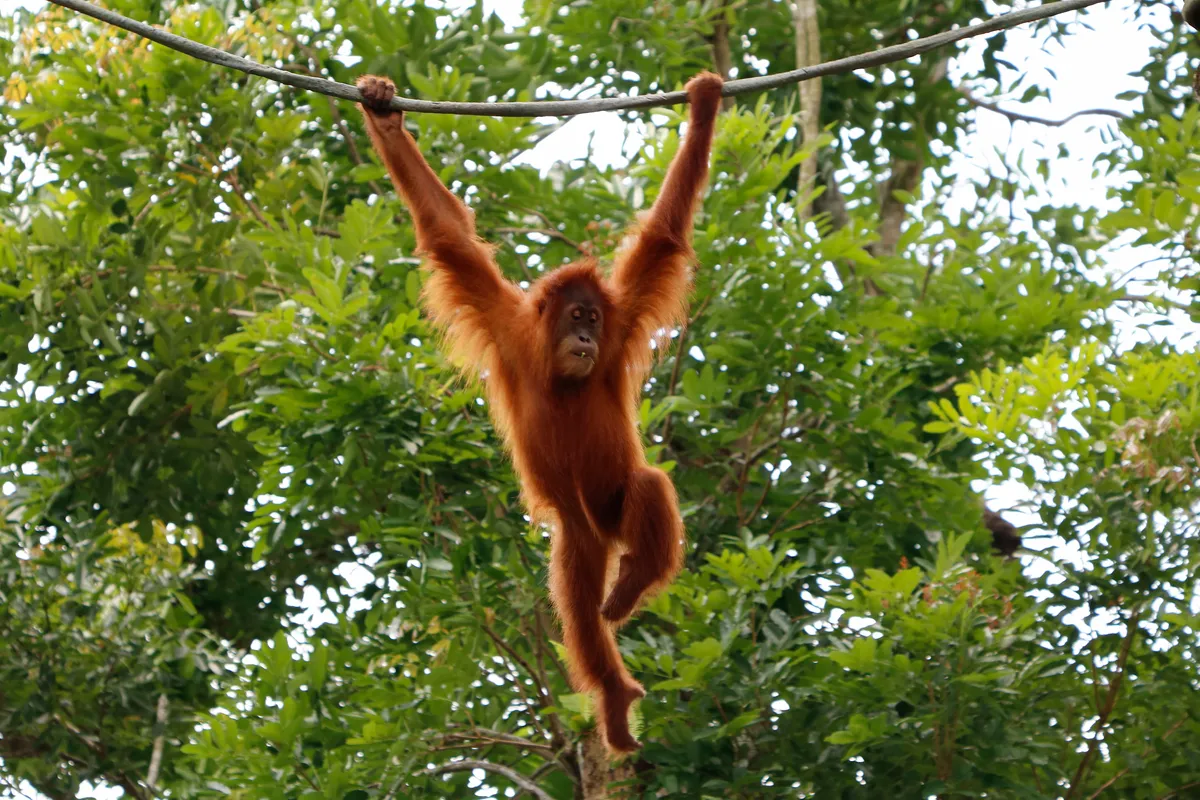
How long do orangutans live in the wild?
We can only make educated guesses. In captive environments, orangutans have lived for over 60 years. Wild females at one study site who were adolescents back in 1971 are still alive today and bearing offspring. A formerly captive female in her 40s recently had an infant. It's possible that wild orangutans may live into their 70s, but this is likely to be rare.
Why do orangutans have such big faces?
Adult male orangutans develop cheekpads, which frame their faces and make their heads look larger. In captivity, males as young as 13 develop cheekpads, but in the wild, some males may not grow them until the age of 30. Once a male has his cheekpads, he won't tolerate any other adult males in his vicinity and competes with them for access to receptive females. Cheekpads may also serve an acoustic function in helping project the 'long call' a male uses to broadcast his presence through the dense forest.

How far do orangutan males travel in their lifetime?
They travel greater distances than females. Researchers suspect they may wander hundreds of kilometres away from their mothers' home ranges. In the space of one year, one adolescent male travelled a distance of more than 30km as the crow flies.
Do male orangutans look the same as female orangutans?
Orangutans are among the most sexually dimorphic of primates. An adult male may be three times heavier than an adult female. He also sports large cheekpads, a throat pouch that acts as a resonating chamber for his loud call, and a muscular body from a testosterone surge at an earlier stage of life. Males use their large size to compete with each other for access to receptive females.

Are baby orangutans cared for by their mothers?
Orangutans have the most intense relationship between mother and young of any non-human mammal. A baby orangutan will be carried around by its mother, and that will continue for the first five years. Some mothers even suckle their offspring for six or seven years. For the first eight years of a young orangutans life, its mother is its constant companion. Until another baby orangutan is born, mothers sleep in a nest with their offspring every night.
Who was Clyde the orangutan?
Back in 1978, Clyde the orangutan became an unexpected movie star as Clint Eastwood's sidekick in the box office hit Every Which Way But Loose. Clyde was played by a trained orangutan named Manis, but was replaced for the sequel as he grew too quickly.
Have sociable are orangutans?
Ex-captive individuals associated with rehabilitation programmes tend to be more gregarious than wild orangutans. If wild populations lived in fertile lowland areas with abundant concentrations of food, they might have been more gregarious. Since humans have destroyed such forests to use the land for agriculture, sociable orangutans, if they ever existed, are long gone.
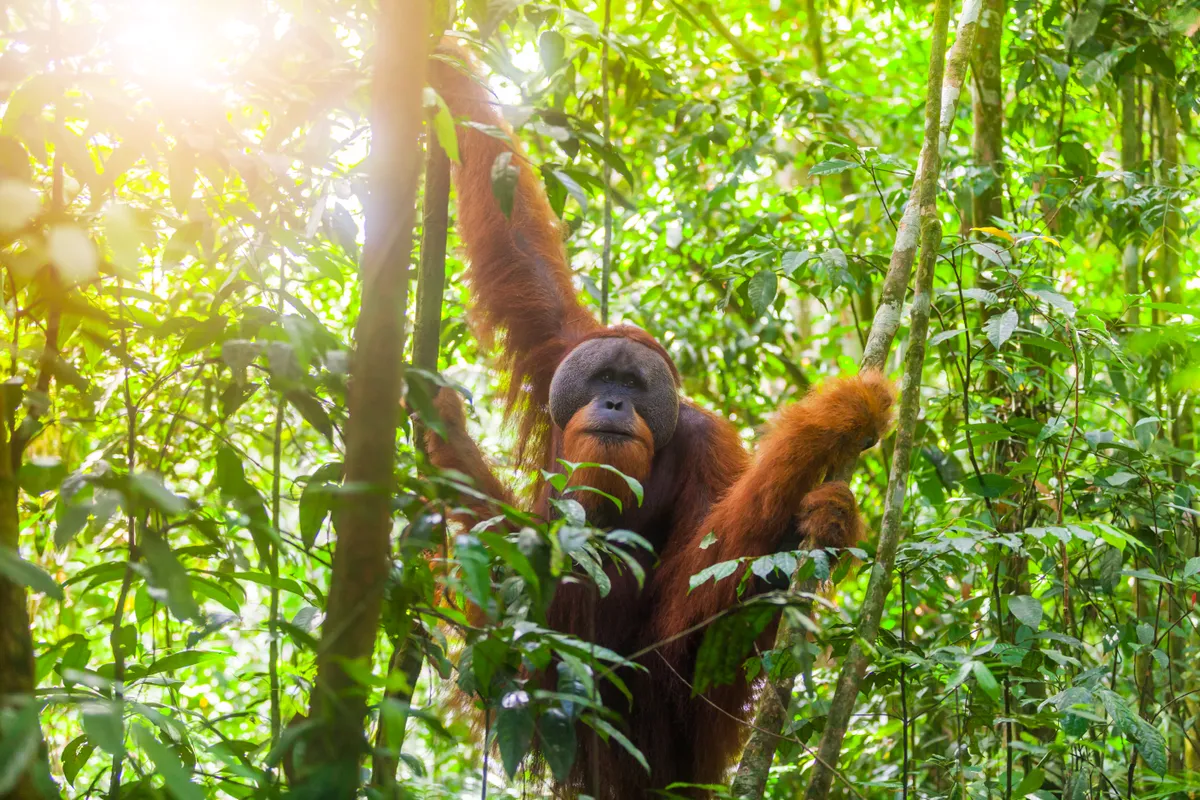
How do orangutans communicate to warn of danger?
Orangutans can appear disconcertingly human. It’s an uncanniness that is now bolstered by the discovery of a remarkably human-like communication technique, says Stuart Blackman.
When approached by a predator, orangutans issue what is called a ‘kiss squeak’ alarm call. But biologists in Borneo have noticed that some of the apes place a cupped hand in front of the mouth when making the sound.
In humans, such a gesture is usually employed to keep whispered conversations private. But it seems that, for orangutans, it serves a very different purpose.
The cupped hand makes the kiss-squeak call resonate, so the animal sounds bigger than it actually is.
“No other mammal appears to modify their calls in this way,” said Bart de Boer of the Free University Brussels, who led the research. “It is probably a signal to the predator: ‘Don’t bother stalking me, I have spotted you already!’”
Source: Journal of Experimental Biology
How often do orangutans reproduce?
Orangutans have the longest birth interval of any mammal. In Borneo, they give birth on average once every eight years. In Sumatra, some females may only give birth once every 10 years. Females often do not breed until the age of 17. If adult females are killed, the population takes a long time to recover.
Are there any albino orangutans?
There's only one known albino orangutan in the world. Discovered in captivity in Indonesia after being taken from the wild, she was rescued by the Borneo Orangutan Survival Foundation (BOS), who named her Alba and took care of her.
Unfortunately, as the world's only albino orangutan, she was so severely threatened by wildlife traffickers that she was had to be moved to her own private island in 2018. She's protected by round-the-clock security guards and lives with three orange orangutan friends that she met during her time with BOS.
Are orangutans the only great apes in Asia?
Orangutans are the only great apes of Asia, but not the only apes. It appears that they are of African origin but dispersed about 15 million years ago. During the Miocene period, there were many ape species throughout Africa, Asia and Europe. Chimpanzees, bonobos and gorillas survived in Africa, but only the orangutans survived in Asia.
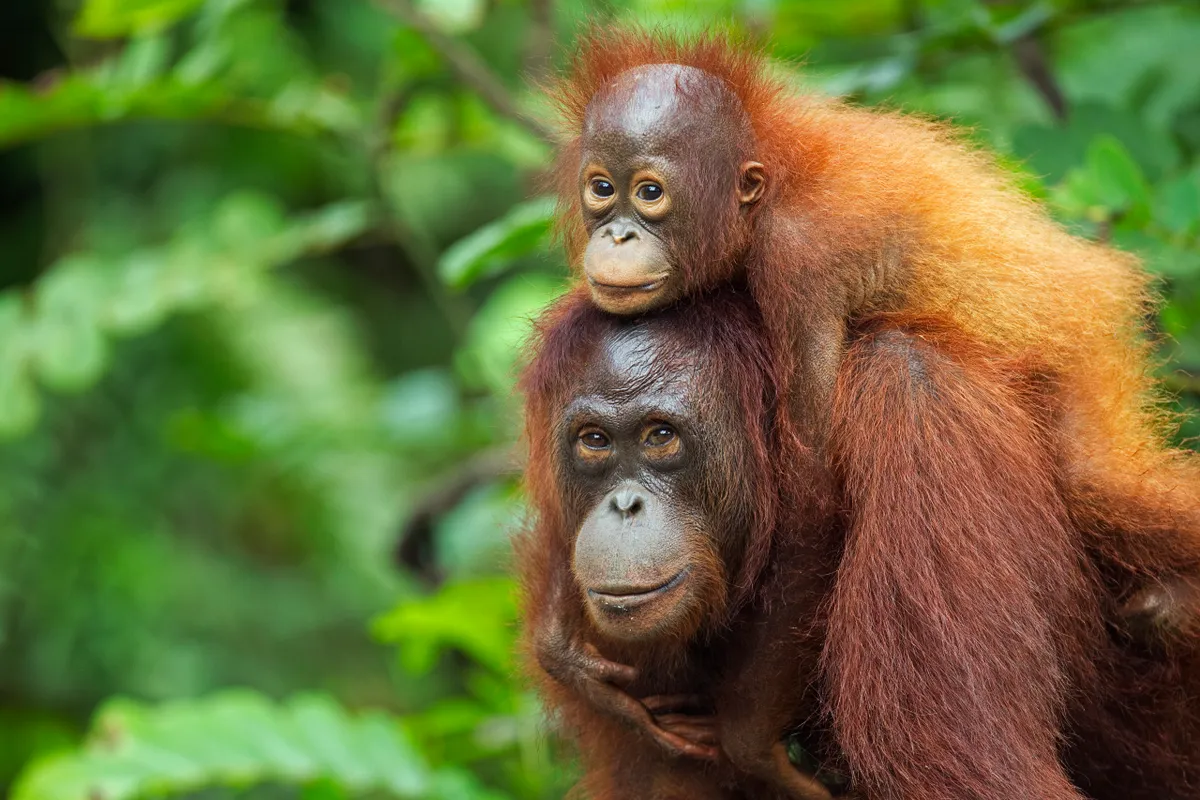
It's hard to forget the Jungle Book orangutan, the terrifying and enigmatic King Louie. But he should never have been there in the first place - the Jungle Book was set in the forests of central India, thousands of miles from the nearest wild orangutan. Still, it did make a pretty good story.
Why orangutans are endangered?
The massive destruction of the orangutans habitat - the tropical rainforests of Borneo and Sumatra - is catastrophic. We are working to save the species and its habitat, but the forces arrayed against the orangutan are so formidable that perhaps, if we (and they) are lucky, just one or two populations may survive.
Deforestation poses a serious threat to Sumatra’s orangutans
A 2016 study found that Sumatran orangutan numbers have been underestimated, but warns of decreases.
Scientists have found that the number of orangutans living on Sumatra is more than double the previous estimate – but insist that their findings are not good news.
That’s because the study also determined that deforestation rates are so high that many of these ‘new’ orangutans will be lost within the next 15 years.
The population was assessed at 14,613, compared with 6,600.
Deforestation poses a serious threat to Sumatra’s orangutans
Do orangutans use tools?
Orangutans are gentle and sit for hours gazing. They are also very smart: they perform as well as chimpanzees and gorillas in tests of cognitive ability. In captivity, they are excellent tool-users and versatile tool-makers. One captive orangutan was taught how to chip a stone hand-axe. In the wild, one population makes and uses tools for opening and extracting fruit in a sophisticated manner reminiscent of chimpanzees – except that these orangutans hold the tools in their mouths.

Please note that external videos may contain ads:
The best places to see orangutans
Wild orangutans occur in scattered populations in a fraction of their former range. Rehabilitated individuals are being released in areas where the species has died out (see map below).

An encounter with a free-ranging orangutan remains one of the world’s great wildlife experiences, and it's sadly possible that the opportunity might not exist at all in the future. Here are the best places where you can still see orangutans for yourself.
Danum Valley Conservation Area, Sabah, Malaysia
Danum Valley forms part of a 400km
rainforest reserve and harbours some of the richest concentrations of wildlife anywhere on Borneo, including healthy populations of orangutans.
The best place to stay is Borneo Rainforest Lodge on the banks of the Danum River. It has a network of well-laid-out trails, and resident guides who will help you to spot wild orangutans, red leaf monkeys and Bornean gibbons within a stone’s throw of your room.
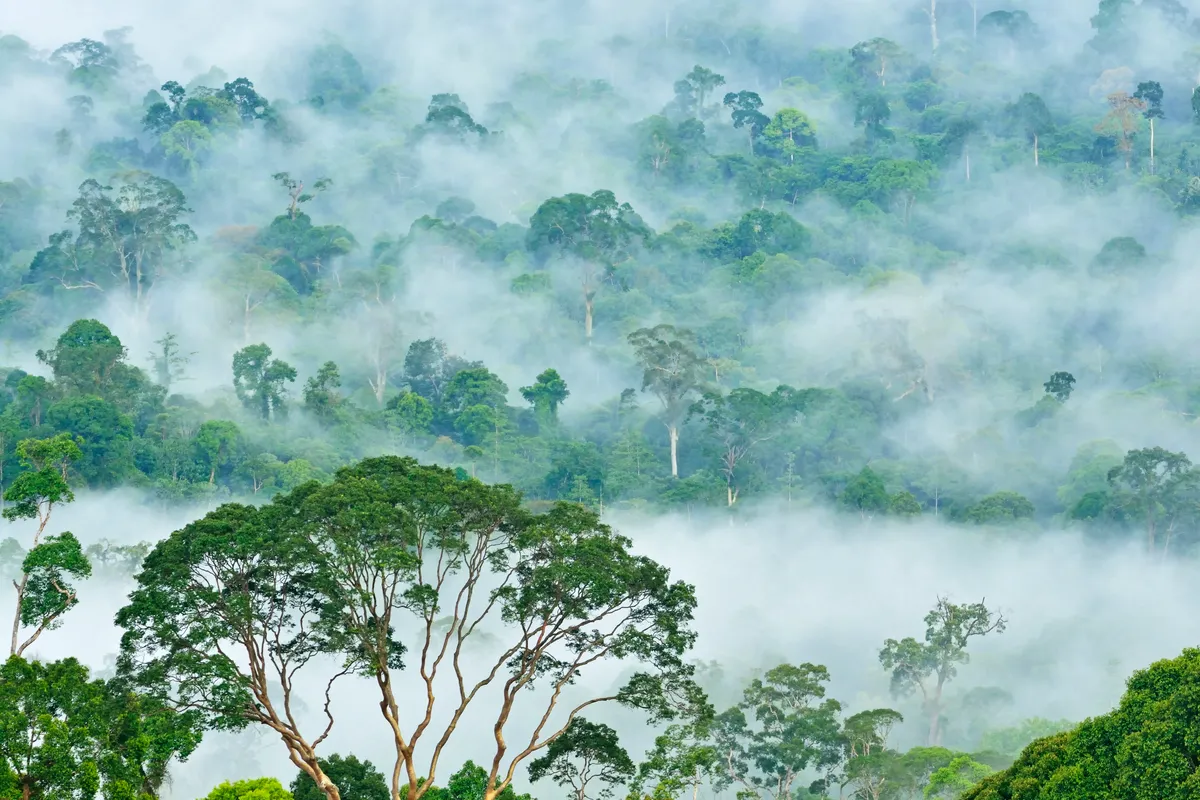
Birdwatching is excellent, too: open areas attract mixed flocks, while noisy wreathed, wrinkled and rhinoceros hornbills are conspicuous near fruiting trees.
An early morning stroll on the canopy walkway provides spectacular treetop views and the chance of seeing orangutans or other primates.
Night walks offer windows into the world of the forest’s nocturnal creatures, including giant flying squirrels and leopard cats. You might also spot Borneo’s smaller primates, the slow loris and western tarsier.

- Borneo Rainforest Lodge
- Danum Valley Field Centre is a cheaper option. Primarily a research station, tourists can stay here, though there are no guides.
Lower Kinabatangan Wildlife Sanctuary, Sabah, Malaysia
The Kinabatangan is Sabah’s longest river, and in its lower reaches forms a flood-plain ecosystem of almost unparalleled richness.
This is not only a great destination for seeing wild orangutans, it is probably the best place in the world to spot proboscis monkeys and Bornean pygmy elephants, as well as a vast array of birds and reptiles.
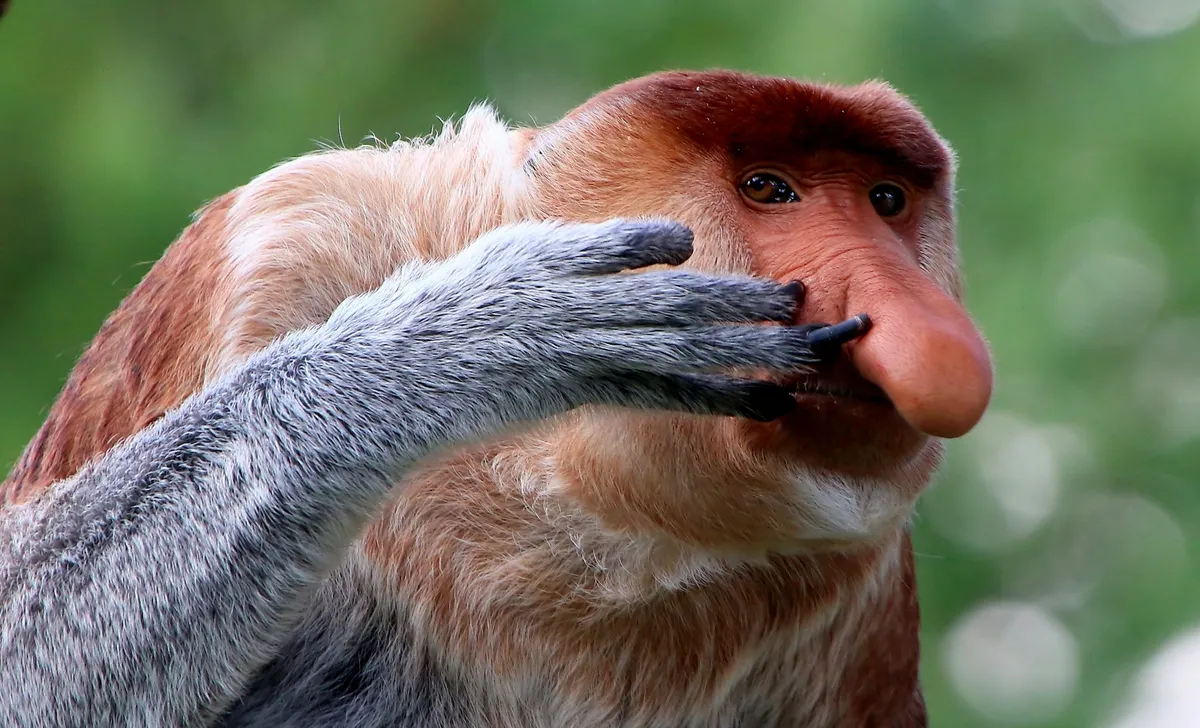
The majority of the lodges are in Sukau, some 80km upriver from the coast. The wildlife is remarkably tolerant of people on the water – important, because most of your time will be spent in boats.
Encounters with orangutans, both along the main river and its tributaries, and around oxbow lakes, are reasonably frequent. If there is a large tree in fruit, one or more individuals can take up residence nearby for several days. Long-tailed and pig-tailed macaques are common, too.
- Sukau Rainforest Lodge
- Kinabatangan Riverside Lodge
- Nature Kinabatangan Lodge is the best of several options at Kampung Bilit, a short distance upstream from Sukau.
Tanjung Puting National Park, Kalimantan, Indonesia
Lying just inland from the south coast of Borneo, Tanjung Puting covers 3,040km
of lowland dipterocarp and peat-swamp forest. It is the largest protected area in Central Kalimantan and one of the most important sanctuaries for wild orangutans on Borneo.
Tanjung Puting was first made famous by the long-term orangutan research carried out by Dr Biruté Mary Galdikas at Camp Leakey, in the north of the park, which became one of the island’s foremost rehabilitation centres.

In 1995, releases into the park stopped. Today it supports a thriving population of wild and previously released orangutans. Rehabilitated individuals are now introduced into Lamandau, a recently gazetted nature reserve created from an expired logging concession to the west of the national park itself.
To date, more than 100 rescued animals have been reintroduced there, along with some wild adults relocated from other sites.
In addition, Tanjung Puting hosts a wide range of other wildlife. Watch out for sizeable populations of proboscis monkeys, agile gibbons and silvered langurs, plus birdlife including several species of hornbill, egrets, herons and storks.

Access is via Pangkalan Bun, which has the nearest airport, or the port of Kumai, then by boat to Tanjung Harapan (2½ hours). The park and Camp Leakey are a further two hours along the blackwater Sekonyer River.
- Orangutan Foundation International runs trips led by Dr Biruté Mary Galdikas.
- Rimba Orangutan Eco Lodge is at Tanjung Harapan.
Gunung Leuser National Park, Sumatra, Indonesia
This is the only place where you have a realistic chance of seeing Sumatran orangutans, notably at Bohorok Orangutan Rehabilitation Centre near the village of Bukit Lawang.
Since the centre opened in 1973, more than 200 successful reintroductions have been achieved. That programme ceased in 1996 due to a lack of funding and overpopulation of the apes in the immediate area, but wild and rehabilitated animals remain in the vicinity and return regularly to a feeding platform, providing excellent viewing opportunities.

You can encounter free-ranging orangutans on walks along the network of forest trails.
Orangutan sanctuaries
Most visitors to Borneo and Sumatra head for rehabilitation centres where sightings are virtually guaranteed. There are six major centres in Borneo: one in Sabah, two in Sarawak and three in Kalimantan. The best are below:
- Sepilok Orangutan Rehabilitation Centre, Sabah, has cared for more than 100 orangutans since it opened in 1964.
This orangutan sanctuary in Borneo has twice-daily feeding sessions that attract apes to a platform in the forest for a free meal. Guided walks through Kabili-Sepilok Forest Reserve are also worthwhile. Stay at Sepilok Nature Resort or Sepilok Jungle Resort.
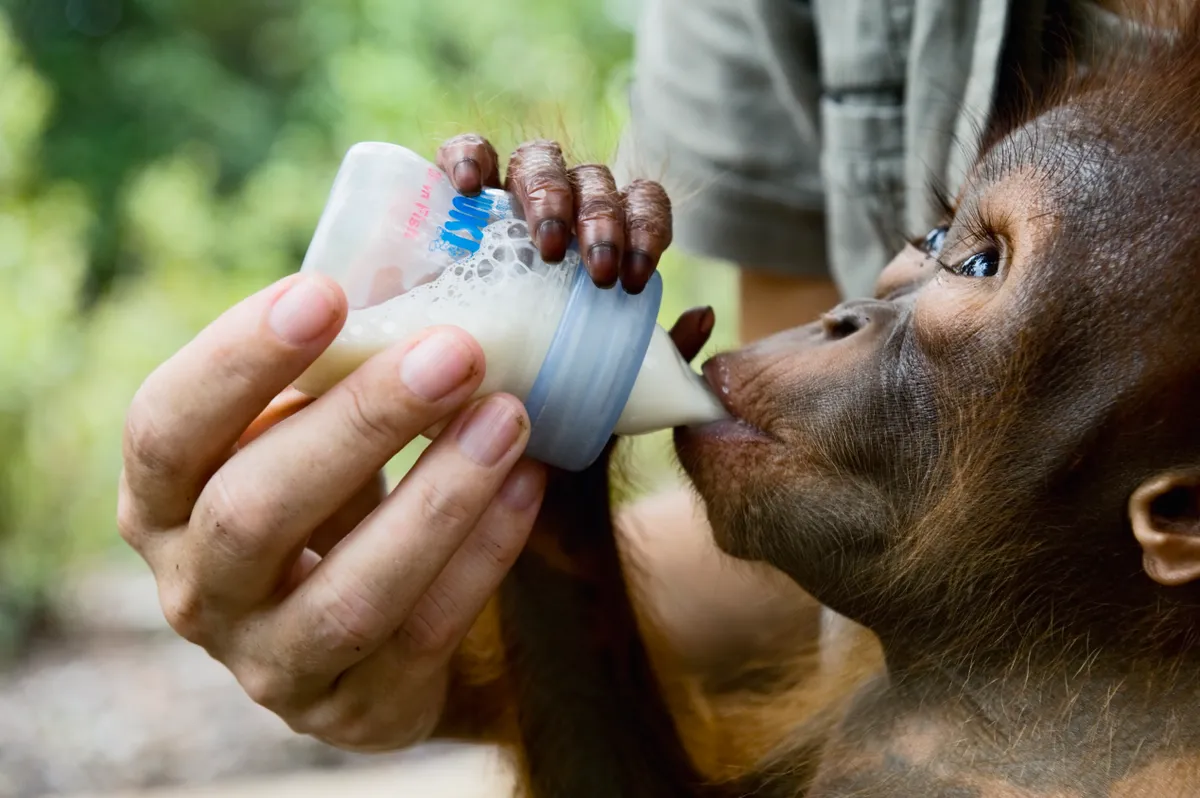
- Rasa Ria Nature Reserve, Sabah, is a small centre in an area of secondary forest north of Kota Kinabalu. Linked to Sepilok, it is a collaboration between the hotel and Sabah State Wildlife Department, and forms part of the Rasa Ria Shangri-La Hotel complex. Young orangutans begin their rehabilitation here before being moved to Sepilok.